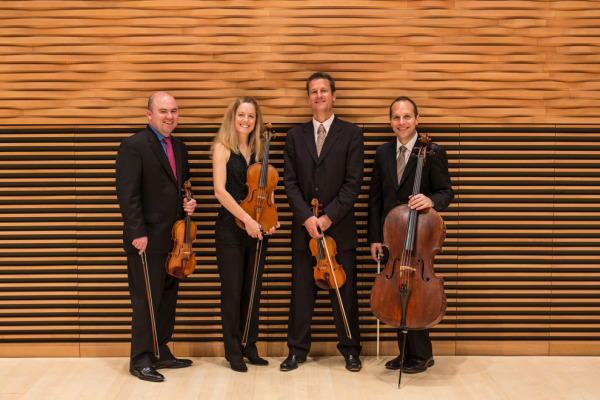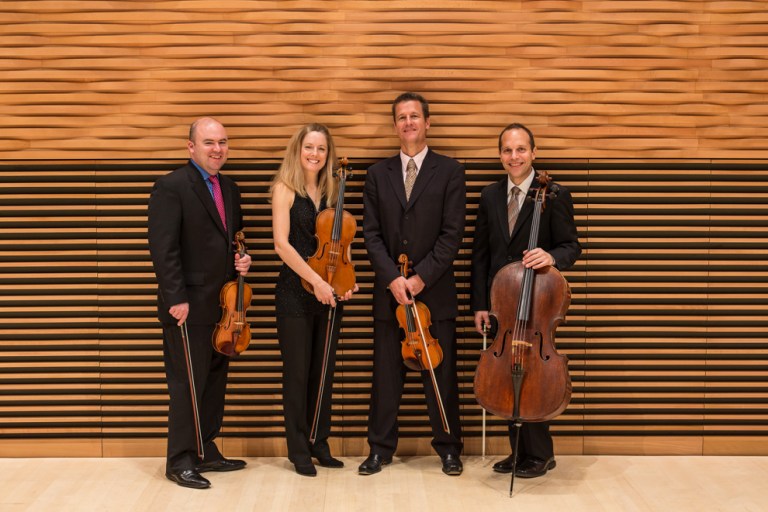
The St. Lawrence String Quartet (SLSQ) is one of the most well-known string quartets in the world. This year, as Stanford’s quartet-in-residence, it will be celebrating its 25th anniversary with a concert at Bing Concert Hall on Sunday afternoon. The performance will feature a new work by Stanford Professor Jonathan Berger. We talked with Geoff Nuttall, first violinist of SLSQ, about his years of work both within the group and at Stanford.
The Stanford Daily (TSD): SLSQ boasts an immense repertoire, from Schumann to Shostakovich to John Adams. Out of all of this music, do you have a favorite composer, piece or time period you especially love to perform and why?
St. Lawrence String Quartet (SLSQ): Haydn is one of the greatest string quartet composers to have ever lived – nobody comes close to him. He created the genre, composed amazingly imaginative music within the confines of the classical style. Of course, Adams and Shostakovich are inspiring in their own way. It’s like asking the question: “What kind of chips do you like the best?” But I like Haydn more.
TSD: In your experience, how is chamber music different from other genres of music performance – solos, orchestral performance, etc.? What makes it special?
SLSQ; There are so many reasons. The repertoire is totally unparalleled, with total masterpieces from Haydn to Shostakovich. Not only are we inspired by incredible music, but you’re able to control your artistic destiny. You can improvise and there’s total democracy in the artistic sense. With the quality, plus the repertoire, plus the ability to make one’s own decisions about rehearsals, nothing comes even close to it. But there are some negatives about it as well. It’s very hard to make a living. There’s four people and not a lot of money. As a string quartet, we’ve been incredibly lucky. We can have a life and a family and still perform.
TSD: Now that you’ve performed in the Bing Concert Hall several times, what do you like best about the venue?
SLSQ: There’s so much sound; It’s so incredible. The best thing about it is silence. Total silence – no background noise whatsoever – is now rare. The string quartet relies on silence – some of our best moments have been reaching the end of a piece and having people listen to the total silence. We’ve played at Carnegie Hall, the subway, and you forget how cool that is.
TSD: You’ve worked at Stanford since 1998. What drew you to our university, and what has made you want to stay?
SLSQ: Man, Stanford is unbelievable. The last 15 years or so have been an incredible time to be involved in arts. The best thing here is the people – both the faculty and the students. There are few who will come out of Stanford with degrees in music, but many will continue to play and bring music alive. This is what makes the Stanford experience very different than teaching at Juilliard, which is a professional school creating professional musicians.
TSD: What’s your experience been like working with students on stage and in the classroom at Stanford?
SLSQ: The greatest experience is working with a mixed group of individuals, from undergrads to grad students. This act of music to bring people together – not forcing them, but focusing on interpersonal relationships – working together toward a common goal. One of the best things working here is watching people get something from the act of playing music together.
Contact Marty Semilla at msemilla “at” stanford.edu and Marisa Lin at mlin3 “at” stanford.edu
